Quality oral care can prevent the formation of tartar, bleeding, caries and other dental diseases. Therefore, the choice of means for cleaning teeth and gums should be approached with all responsibility. Among the goods for oral hygiene, electric toothbrushes have gained immense popularity, which not only does all the work for their owner, but also provides a high quality removal of plaque even in hard-to-reach areas. Instruments are presented in a huge range and choose the best option is difficult. In order to make your purchase more quickly, we have gathered the key characteristics of electric toothbrushes that affect the operation of the device and the ease of operation.

Contents:
- The best manufacturers of electric toothbrushes - which firm to choose
- How it works and the device
- Types of electric toothbrushes
- Options for choosing an electric toothbrush
- Which electric toothbrush to choose
- How much does an electric toothbrush
? The best manufacturers of electric toothbrushes - which firmchoose
When choosing an electric toothbrush, first of all, you should determine the manufacturer of the product. Preference is best given to reputable companies that have proven themselves on the positive side.
These companies include:
- Oral-B;
- Braun;
- SoWash.
Brands value their reputation, therefore they produce goods of the highest quality. Many dentists recommend the products of these companies for effective daily oral hygiene, as electric toothbrushes do work for their users and minimize the likelihood of poor-quality cleaning.
To find out which models of electric toothbrushes occupy a leading position among hygienic oral care products, please read our rating of the best electric toothbrushes.
Principle of operation and device
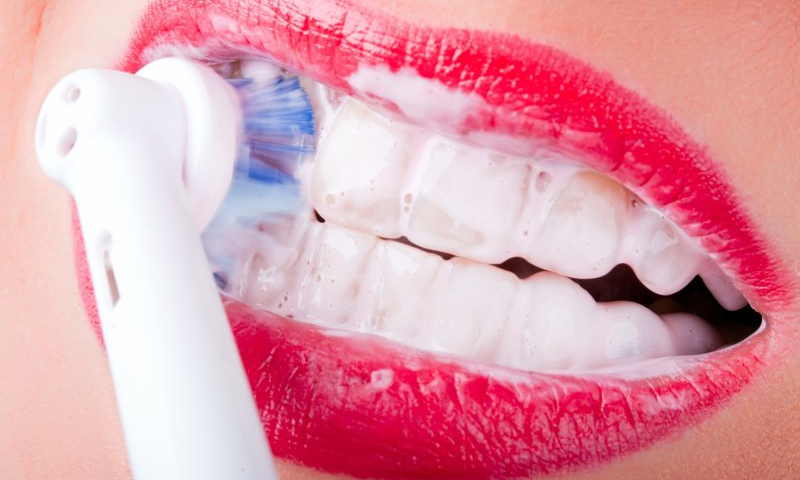
Electric toothbrush( EZSCH) - a modern device for cleaning teeth. Removal of the plaque occurs due to frequent vibration of the bristles, the movements can be back-rotational and vibrating( up-down).
The design of the device includes:
1. brush head, which is easy to change, therefore several people can use the electromechanical handle, while having their own brush-attachment;
2. the stem-holder of the head;
3. handle, which is equipped with a motor, electronic control unit and power supply.
Electric toothbrushes operate on battery or batteries. Therefore, each device is equipped with a charger, on which it is installed for recharging. Charging has a plug for a standard outlet. Some brushes work from the network, they are less popular, since they restrict mobility.
The efficiency of an electric toothbrush( as compared to an ordinary toothbrush) is as follows:
1. The electric brush reduces the dental hygiene time by almost 2 times, while it is easy to control the duration of the procedure, since many models are equipped with a special timer, which after 2 minutessignals the end of the recommended cleaning time;
2. Based on research results, an electric toothbrush provides more effective oral hygiene, including in hard-to-reach areas;
3. No effort is required to remove plaque, which is an undeniable advantage for people with reduced mobility, fractures, muscle atrophy.
4. Electric toothbrushes have a wide range of nozzles.
Kinds of electric toothbrushes
Standard

This type is characterized by devices with a circular rotating head, which can move in different modes. Depending on the specific model, the speed of rotation in such brushes is from 2000 to 30,000 movements per minute. The instruments are excellent for use by children or people with sensitive teeth.
Advantages:
- are the most affordable;
- provide soft cleaning;
- does not destroy the fastening of orthodontic structures.
Disadvantages:
- is inferior in efficiency to sound and ultrasound.
Sound
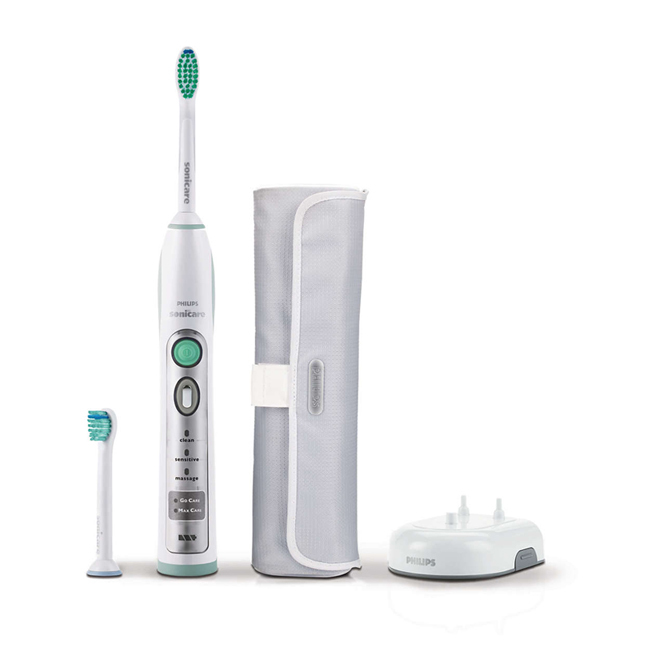
The instruments are all toothbrushes, vibration of which is audible to a person. Such devices clean the mouth with special technology: a special membrane generates sound waves and their vibrations are transmitted along the brush fibers of the brush.
Due to oscillating movements of a certain amplitude and frequency, the brush ensures the formation of a uniform consistency of foam from paste, water and air, which contributes to a gentle and effective removal of plaque even in hard-to-reach areas. Advantages:
- the use of such brushes does not harm the fastening of veneers, braces, seals;
- low cost;
- double cleansing of the teeth surface: the most brush and sound;
- thorough gum massage, improvement of blood microcirculation, prevention of bleeding;
- soft cleaning without enamel injury;
- in the presence of several individual attachments, one EZSCH can be used by the whole family.
Disadvantages:
- with inefficient use the device can adversely affect the enamel.
Ultrasound
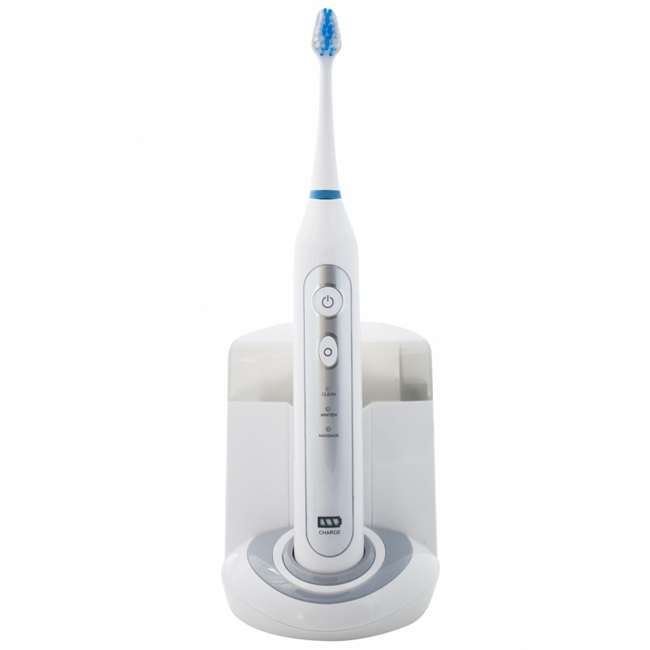
This is a special kind of electric toothbrush. Their principle of operation is similar to the operation of audio brushes. The main difference is the high frequency of rotation, which removes even dental stones. If the sound brushes "sweep" the remnants of food, the ultrasound, due to vibrations, destroys the plaque on the teeth and protects the gum from the negative effects of pathogenic bacteria.
Ultrasonic brushes work with an electric motor, which converts electrical energy into ultrasonic waves of high frequency. The latter extend 5 mm from the bristles.
The device can produce 96 million or 192 million pulsations per minute. Due to this action, the device effectively removes pigment and mineralized plaque, as well as contamination in hard-to-reach areas where a simple brush makes several movements.
During cleaning, a person can feel the heat. The tissue of the teeth heats up, which is more likely a positive moment, since an increase in temperature speeds up blood circulation in the gums.
Advantages:
- economical expenditure of toothpaste;
- minimum effort - for cleaning it is enough to bring the brush to the teeth and wait until the device does its job;
- highest frequency of oscillation and, as a result, excellent quality of teeth cleaning;
- effectively removes pigmentation.
Disadvantages:
- high speed may cause seal failure;
- brushes are not recommended for people wearing veneers, crowns or other artificial structures, becauseunder the influence of high rotation speed, the latter can break;
- is contraindicated in people who have undergone oncology operations in the oral cavity or parodontium surgery, with 3-degree teeth mobility, hypertrophic gingivitis, stomatitis, children under 3 years old, with abnormal abrasion and low enamel density, with gum disease.
Parameters for selecting an electric toothbrush
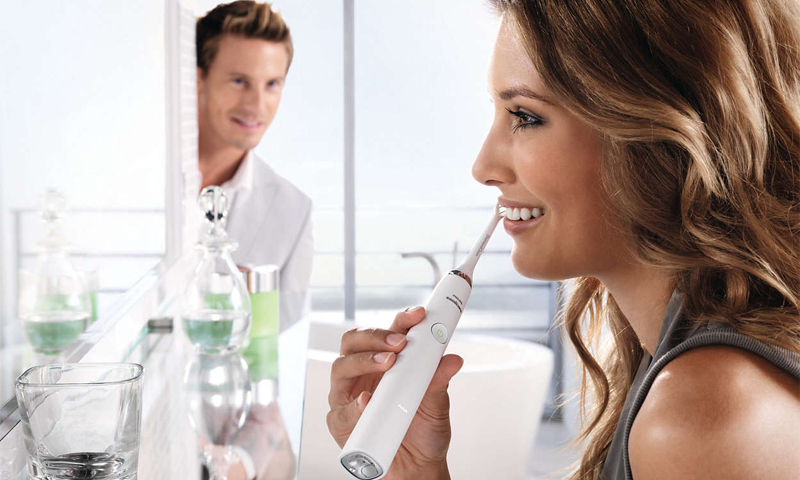
Kind of an electric toothbrush
When choosing a brush for this parameter, you first need to determine what intensity of cleaning is necessary and, based on preferences and indications for use, choose the appropriate kind.
Cleaning Modes
The device can have several cleaning modes: return-rotational and vibrating( up-down).In addition, the device can perform gum massage, whitening, cleaning of sensitive teeth, and tongue.
Speed of operation
Speed of standard and sound brushes - up to 30,000 pulses per minute, ultrasonic - 96 million or 192 million per minute.
Brush head shape
The surface of the brush should be round, this reduces the likelihood of injury to the oral mucosa. It is desirable that the rear side is made of a rough material, which will clean the mucosa from microorganisms.
Size
The brush head can be from 18 to 35 mm in size. Children are advised to purchase a brush, the head of which does not exceed 22 mm, for adults - 25-27 mm.
Rigidity
An electric toothbrush can have soft bristles and bristles of medium rigidity.
1. Soft suitable for children or people with increased sensitivity of teeth.
2. For the remaining cases, the best option is medium-hard brushes.
Bristle material
The most popular material used for making bristles is synthetic pile, which is smooth, lack of pores, long service life, low cost.
There are natural bristle brushes, they are suitable for allergy sufferers, but they have significant shortcomings: short life, they are difficult to find on sale, they are expensive, they are a breeding ground for bacteria, too soft, so they are worse cleaned.
Brush handle
To ensure that the brush does not slip in the hand during tooth cleaning, it is recommended to purchase electric toothbrushes with rubberized inserts on the handle.
Nozzles
It should be noted that the brush has a removable head, if the nozzle deteriorates, it will be enough to replace it with another, and not to buy a new one.
Additional functions of
Electric toothbrushes can have extended functionality:
1. Pressure sensors that signal strong brush pressure on the tooth enamel and prevent its erasure and injury to the gums.
2. A timer that helps to control the duration of cleaning;
3. Wear indicator, which indicates the need to replace the brush head;
4. Backlight.
Power type
All electrical toothbrushes require power to which batteries or batteries can provide. The latter provide a longer brush operation.
Weight
Optimal weight of an electric toothbrush is 100-200 g. Brushes that weigh more will be inconvenient to operate.
Which electric toothbrush to choose
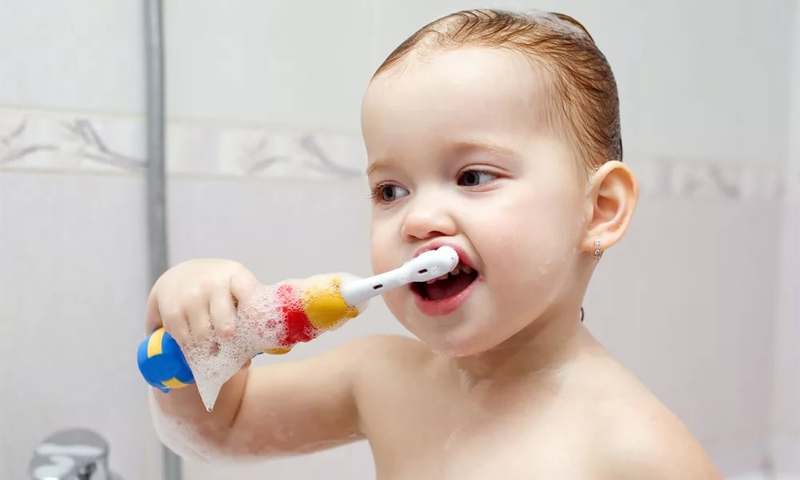
1. For people who have seals, veneers or crowns, standard and sound brushes are recommended, since in ultrasonic devices the vibrational wave has a high frequency that extends deep into the tooth tissues and causes their microvibration, which leads todestruction of the binder component. If the teeth are healthy, there are no problems with the gums, then an ultrasonic toothbrush is suitable for use.
2. For a softer dental cleaning it is better to purchase a device with reciprocating rotational movements. Vibrating technology - more powerful, it should be used, it is suitable for more intensive cleaning.
3. When choosing a brush for a child, it is better to give preference to devices with a rotational speed of not more than 18,000 per minute, so the device will not create additional stress on the enamel.
4. With increased sensitivity of the teeth, it is better to buy a brush with soft bristles, so when cleaning the device will not injure hard tooth tissues. If there are no problems with the enamel, then a brush with medium stiffness will do.
5. It is better to purchase a device with a synthetic material of bristles. It will last a long time, besides it is not a breeding ground for the propagation of pathogenic microorganisms and is relatively inexpensive. With individual intolerance to synthetic materials, it is better to purchase a brush with natural bristles.
6. If a brush is used by one person, then 1-2 nozzles complete with the device are enough, if the whole family - then it is necessary to purchase a device with a corresponding number of attachments.
How much does an electric toothbrush
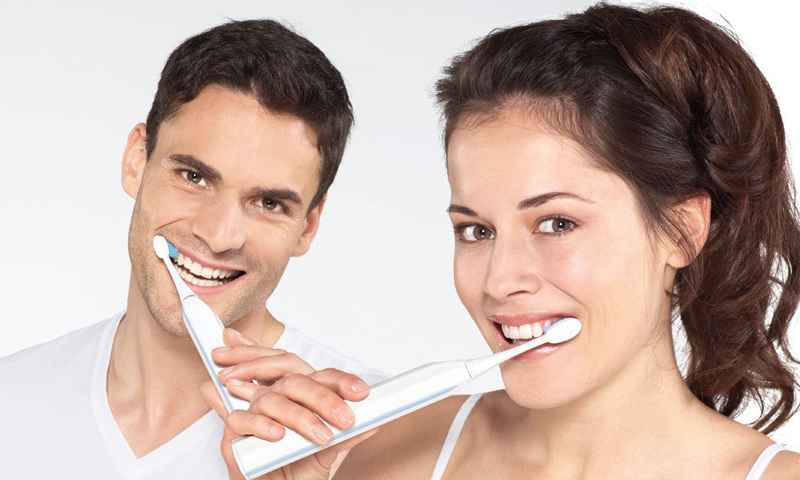
1. Standard electric toothbrushes with a minimum number of nozzles and several modes of operation are in the range of 850-5000 r.
2. Sound electric toothbrushes stand within 1200-11000 r.
3. Ultrasonic electric toothbrushes: 2000-15000 р.



